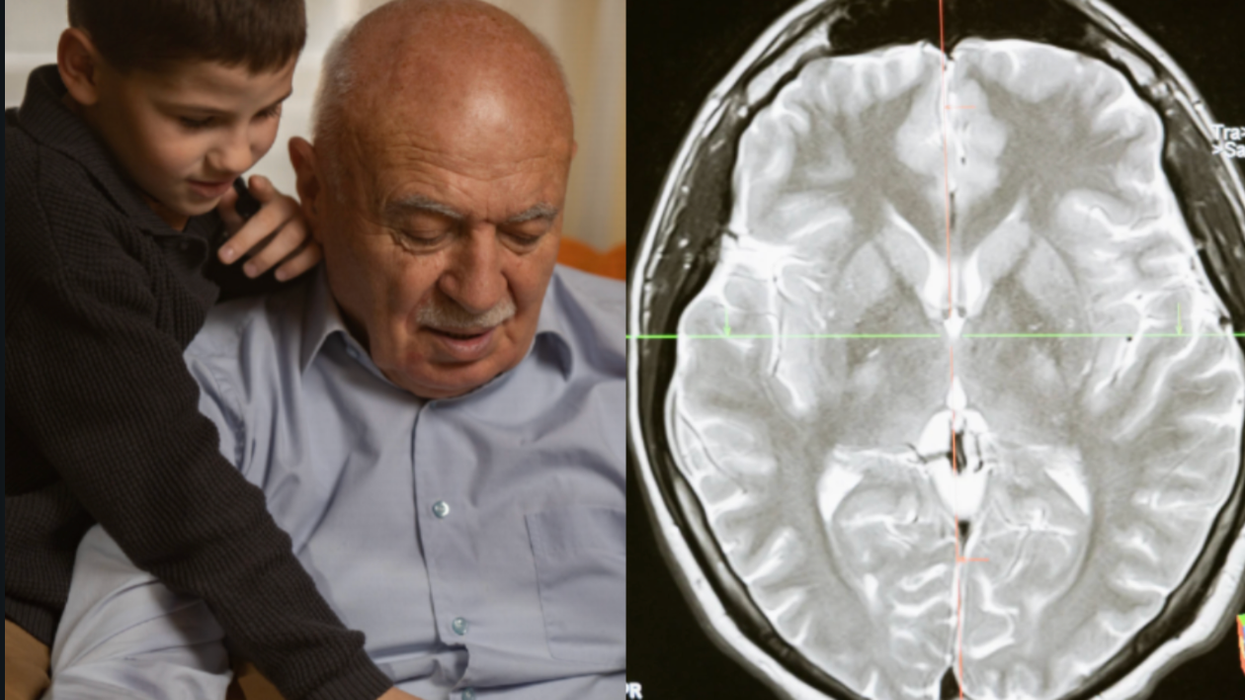My body is not in mint condition. I’ve got a constant tremor, a dead man’s blood pressure, and joints that can tell the weather as well as Al Roker, to name just a few complaints. And like everyone with a mild chronic condition or two, by now I’m used to receiving unsolicited alternative medical advice every time any of these subjects come up. But a little while ago, a close relative recommended that I look into live blood analysis, a process I’d never heard of and which I promised to look it up, only to discover that it’s not just fairly widespread—it’s also incredibly dubious, yet too erratic and vague to solidly debunk, leaving LBA murky and controversial.
What’s clear is that the medical community at large does not accept LBA. Many in the medical field see it as borderline abusive quackery. LBA practitioners technically can’t even offer their services as a legitimate diagnostic or treatment—nor, given how little research there is behind it right now, should they. Yet after wading through troves of LBA literature and takedowns, undergoing the procedure, and talking to a few practitioners, it strikes me that the much-derided LBA isn’t always conducted as the maliciously fraudulent or dangerous procedure that skeptics believe it to be. Fundamentally, it can be about as amusing-to-harmless as astrology; and if studied in greater depth it may even eventually prove to have some value (although I personally doubt it). The real problem with LBA is that, like most alternative medicine, it’s so incredibly unregulated and fast-and-loose that it has become a breeding ground for snake-oil salespeople, whose practices range from misleading to dangerous and even deadly. And like all alternative treatments, LBA ought to be approached with a degree of caution—it can become a real threat when patients are convinced that it’s a replacement for actual medical attention.
At its core, LBA (also known as biocytonics, darkfield video analysis, nutritional blood analysis, or vital hematology) involves an accepted medical procedure. A practitioner takes a drop of your blood and, rather than drying and staining it as most analysts do, puts it right under a microscope. Using the “darkfield” technique, whereby light strikes the blood from the side rather than underneath, they can then observe your live cells bouncing around and project them onto a video monitor. But whereas most doctors just use darkfield microscopy to detect spirochete bacteria (e.g., Lyme disease, syphilis, or yaws), LBA advocates say you can use the procedure to identify a host of potential nutritional deficiencies, early-stage conditions, or diseases that traditional blood analysis cannot detect. Blood, LBA holds, is the “river of life,” which reflects your holistic condition and can be used as one self-awareness metric amongst many.
That would sound a lot more convincing if the majority of LBA practitioners were actually qualified to prick your finger for blood in the first place. Overwhelmingly nutritionists, naturopaths, or other alternative medicinal providers plying their trade at health fairs, wellness centers, or chiropractors’ offices, many LBA practitioners don’t have much background in blood analysis, much less the right to perform invasive procedures on members of the public. A 2001 governmental report also estimated that, of the 10,000 to 15,000 LBA practitioners in the United States at the time, perhaps only one-fifth were properly registered and certified to administer complex laboratory tests—most reputable clinics don’t even offer the service, which does not inspire confidence. But defenders will tell you this just reflects the understudied and underappreciated aspects of the field, and the fact that it’s just one tool amongst many for checking the body’s overall health. And companies marketing LBA setups often bill them as educational devices meant to inspire people to take a greater interest in their health by observing their blood’s natural activity.
Yet while LBA practitioners are hemmed in on many sides, nothing prevents them from telling you about all sorts of crazy things they claim to see in your blood. These include: bacteria or proto-bacteria budding off of cells, blood acidity or acidic crystals in the bloodstream, cholesterol plaque, fermentation of blood cells, parasites, clumping of red blood cells, sluggish white blood cells, yeasts, and all manner of more bizarre terms you might never hear anywhere else. Practitioners are careful not to make definitive diagnoses, but many claim that they can see suggestive signs of or precursors to dozens of diseases—which is pretty much walking right up to the border of diagnosis and thumbing your nose at it, then recommending courses of preventive action that sure as hell sound a lot like treatments to the untrained public ear.
Most of these claims are just ludicrous. Not only would many such objects likely be invisible at normal consumer microscopic magnification (because darkfield analysis apparently isn’t as amazingly precise and clear as advocates make it out to be), but if you had many of these things in your blood, you’d be just about dead. Acidic blood would be a sign of severe lung or kidney disease. Bacteria would usually suggest septicemia; yeast suggests immunodeficiency. Some objects seem to be pure inventions of the LBA field, which doctor-critics don’t even know how to deconstruct. Many observations appear to be misidentifications of natural phenomena (like mistaking the weird shape of a smooshed, malleable blood cell for a sign of nutritional deficiency) or the results of some schmutz on a blood slide created by improper handling. (The National Council Against Health Fraud warned of mass slide mishandlings in LBA practices in the 1980s.) And many legitimate issues they identify, like blood cell clumping, aren’t caused by the things many LBA practitioners attribute them to (like a fatty diet). Instead they may just be the result of pressing blood between the glass plates of a slide.
Reading up on these improbable non-diagnoses, I decided I wanted to hear someone say these things for myself. They seemed a little absurd. I found a practitioner working out of a chiropractor’s office, consented to let her prick my finger (it took two tries to spike a single drop out of me—low BP, bad circulation), then watched as she just unfocused and refocused her microscope for a while, hoping something would pop up on the screen, before realizing minutes later that she’d plugged the video cable into the audio jack. When my blood popped up, it looked surprisingly normal to me—and very cool! Hundreds of little gray donuts wandered about the slide, with platelets buzzing between them and the occasional massive white blood cell trotting through.
The practitioner immediately started casting about for signs of something. First she suggested that she could see bacterial formations in my blood. I said I thought bacteria in the blood was usually a pretty bad sign. She replied that it is usually a sign of septicemia, but we all have organisms in our blood that are fine so long as we stay healthy. I asked where those bacteria came from, and she trailed off. Then she mentioned something about a yeast form. I was skeptical again, and again failed to receive a full answer. Eventually she decided that my clumped blood cells were the result of poor oxidation, suggesting that I ought to eat more greens and asking whether I might be suffering any psychological effects of childhood trauma. (I totally am, but I’m not sure I believe it’s directly affecting “the biome of my blood.”) At one point the process felt like a cold reading, with her casting about for some jargon I’d believe in, but never quite showing me the provenance of her powers in a convincing or comprehensive way.
LBA practitioners aren’t pulling these observations out of their asses entirely. All LBA stems from the works of Dr. Günther Enderlein, an early-20th-century German microbiologist who posited that our bodies and blood are full of tiny critters, including “protists,” early life forms that evolve into different bacterial, yeast, or viral entities throughout their life cycles. Known as “pleomorphism,” Enderlein’s school of microbiology was almost entirely displaced decades ago. Modern medicine holds to “monomorphism,” the idea that pathogens have one basic form, despite slight mutations, and that we catch them from external sources—these pathogens don’t just grow within us based on the terrain of our bloodstream or environmental factors. That’s not exactly encouraging to most of those who might turn to LBA to support their health.
Yet some LBA practitioners aren’t just harmless fringe therapists loyal to a discredited hundred-year-old theory. Many of them seem actively eager to con you into buying herbs and supplements. Often an LBA practitioner’s office will have just the right treated water, plant powder, or “zero-point energy wand” to cure exactly what ails you—even things like parasites, which anyone who’s really encountered them will know are pretty resistant to a bok choy shake. They encourage patients to return time and again to see their blood improve as they follow a supplement regimen supplied out of the same office, or via a friendly provider. At one point, LBA equipment marketers even sold their goods to natural health practitioners claiming that convincing patients to return on a regular basis and pay for supplements would bring a rapid return on the investment. Some suspect that the most aggressive LBA quacks make up to $100,000 a year bilking susceptible minds.
In my own experience, after learning that my blood was clumped and poorly oxidized, I was told that I could try to improve my diet on my own. Or I could take a free sample of a plant powder and mix it into coconut water. If I liked it, I could come back later for more, or use a gift card to purchase other supplements from a company with which the practitioner was openly involved. She even sent me recommendations for other costly treatments (without add-on supplements, one LBA session costs between $50 and $200), including a strong recommendation to visit the chiropractor down the hall to un-jangle my nerves and treat my tremor. I left through a reception room full of supplement bottles and wellness magazines feeling a bit skeeved-out in the same way you do when you encounter an aggressively happy but demanding cultic group.
These supplement regimens can take more than a financial toll. Doctors report numerous cases of LBA practitioners misdiagnosing patients’ symptoms and leading them toward vitamin pills that do nothing to treat their, say, Lyme disease. Well-known practitioners have even faced legal repercussions when they were implicated in harm to or the death of patients relying on their treatment or lifestyle recommendations, and eschewing other treatments out of faith in the LBA process. As a result, some states have moved to shut down or at least severely restrict the practice. Such cases were more common in the 1980s and ‘90s, but they still occur today.
Not all LBA practitioners get into these dangerous hokum rackets. But that just reflects how erratic LBA thinking, diagnoses, and treatments are. You can see the haphazard nature of the practice in a couple of medical journal articles that explore LBA. In one study, multiple LBA analyzers looking at the same sample made drastically different diagnoses. In another, an experienced LBA practitioner was asked to look at the blood of 110 patients, 12 of whom had cancer; he was able to identify just three of the patients’ diseases. Even when dealing with an individual LBA practitioner, requirements, requests, and diagnoses can be fuzzy. For instance, I was asked to keep a food journal (which I did, but will not share here because it’s embarrassingly heavy on babka and burritos), then during my session was never asked to produce or discuss said journal at all. All this randomness and the stench of impropriety throughout the field leads many credentialed, mainstream medical practitioners to declare LBA potentially dangerous first-degree bullshit.
I took my personal experiences and notes to Lynne Hinton, a classically trained microscopist who went over to the darkfield long ago and now trains others in LBA. She said that most of the claims people make about acid, bacteria, and yeast are just plain wrong, and suspects that these individuals are operating either out of bad faith or ignorance. The latter, she suspects, is the key culprit, given the scant training microscope manufacturers give to LBA wannabes, churning out undereducated, mindless, supplement-pushing automatons.
According to Hinton, real, rigorous LBA is grounded not just in twigs and berries and old-school Enderleinian biology but in a hybridization of modern and (by mainstream standards) dated biological views. The way Hinton sees it, bacteria, yeasts, and viruses are singular creatures and we catch them from the external world, like modern biology says. But depending on our health, those pathogens can thrive or falter, mutate or languish, coalesce into threatening emergent phenomenon or remain harmless within our bodies. Basically, that’s a neo-Enderleinian way of saying we’re more likely to get sick if we’re living unhealthy lives—not a controversial thing to say.
To Hinton, LBA is just a way of gauging bodily health in a general sense by looking for certain signs of poor health in the shape and activity of blood cells. In coupling her findings with an educated exploration of a patient’s lifestyle and physical condition, Hinton believes she can get a sense of potential wellness or weaknesses that might open one up to pathogen proliferations and disease. While even the work of “respectable” live blood analysts like Hinton might seem arcane to non-practitioners, she stops short of the biggest hazards by making it clear that you can’t diagnose diseases or medical conditions with LBA—and she doesn’t toe the line by making non-diagnosis diagnoses either, like many do. In fact she recommends against going to anyone who exhibits any of the signs and behaviors I’ve described so far in this piece.
Hinton’s view of blood is still fringe as hell. Yet even if Hinton is dead wrong about what LBA can detect or offer, the way she practices it doesn’t overpromise or overstep, nor does she oppose traditional blood analyses or medicine. At worst, that means she offers people a cool chance to ooooh at their own moving blood. And so long as she just lets people see a cool video and maybe tells them to think about eating better (without prescribing supplements or souring them on the services of mainstream medicine), there’s not much harm she or others like her can do to those who are already seeking out alternative medicine.
But most LBA practitioners seem to lack these cautious limits or scruples. As such, while the treatment is not inherently dangerous, it’s still a potentially hazardous field, full of human-size parasites. I doubt that LBA holds endless secrets to human health. I suspect that there’s a fetish for the esoteric even in most legitimate, heartfelt LBA work—a discontent with the status quo of medicine, which can feel snobbish and intransigent, along with a deep desire to discover lost, intuitive knowledge that makes the world fall into order. For now, if you insist on approaching LBA, do it with skepticism and research in hand. And definitely don’t look to it as a definitive source of diagnosis or treatment. Don’t buy into hype. Just enjoy the bloody film.

















 Image artifacts (diffraction spikes and vertical streaks) appearing in a CCD image of a major solar flare due to the excess incident radiation
Image artifacts (diffraction spikes and vertical streaks) appearing in a CCD image of a major solar flare due to the excess incident radiation

 Ladder leads out of darkness.Photo credit
Ladder leads out of darkness.Photo credit  Woman's reflection in shadow.Photo credit
Woman's reflection in shadow.Photo credit  Young woman frazzled.Photo credit
Young woman frazzled.Photo credit 
 A woman looks out on the waterCanva
A woman looks out on the waterCanva A couple sits in uncomfortable silenceCanva
A couple sits in uncomfortable silenceCanva Gif of woman saying "I won't be bound to any man." via
Gif of woman saying "I won't be bound to any man." via  Woman working late at nightCanva
Woman working late at nightCanva Gif of woman saying "Happy. Independent. Feminine." via
Gif of woman saying "Happy. Independent. Feminine." via 
 Yonaguni Monument, as seen from the south of the formation.
Yonaguni Monument, as seen from the south of the formation. 
